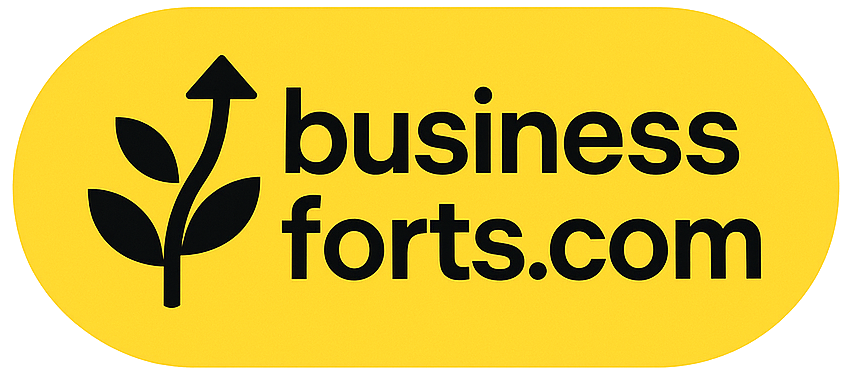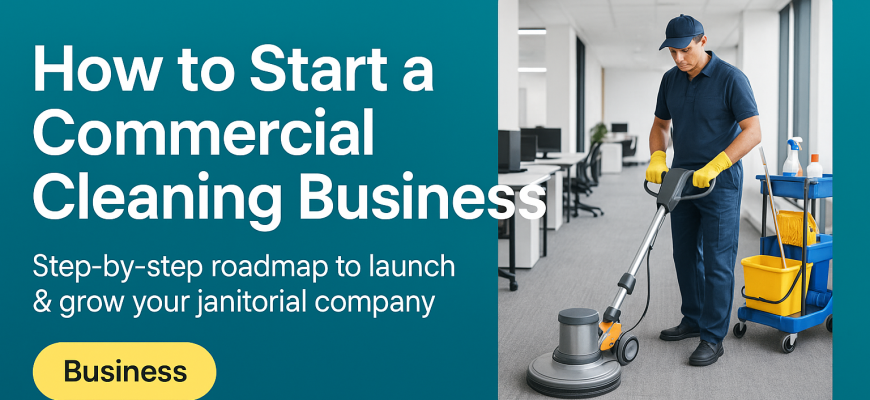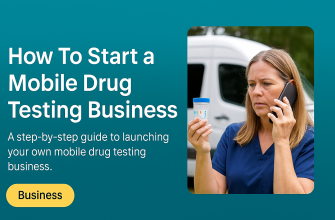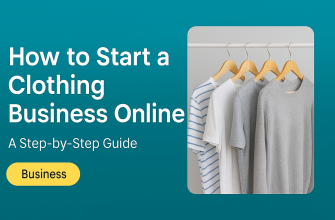Starting your own commercial cleaning business is an exciting way to become your own boss and create something of your own. As a business coach for women, I’ve seen determined women thrive in the cleaning industry, turning a humble service business into a profitable enterprise. In fact, the cleaning services industry in the U.S. is enormous (valued at $90.2 billion in 2023), which means plenty of opportunity for new entrepreneurs. All those success stories of female cleaning business owners prove that you, too, can accomplish your dream of running a successful cleaning company with the right steps and mindset.
In this comprehensive guide, we’ll walk you through how to start a commercial cleaning business in the U.S., step by step. We’ll cover everything from mindset and empowerment to the nitty-gritty practical steps like registering your business, getting an EIN, licenses, insurance, and more.
- Step 1: Embrace the Right Mindset and Believe in Yourself
- Step 2: Create a Solid Business Plan and Vision
- Step 3: Choose a Business Name and Legal Structure
- Step 4: Get Your EIN (Employer Identification Number)
- Step 5: Take Care of Licenses, Permits, and Regulatory Requirements
- Step 6: Secure Business Insurance (Protect Yourself and Your Clients)
- Step 7: Set Up Your Business Finances (Banking and Accounting)
- Step 8: Equip Yourself – Tools, Supplies, and Technology
- Step 9: Set Your Pricing and Service Policies
- Step 10: Market Your Business and Land Your First Clients
- Step 11: Overcome Challenges and Stay Empowered
- You’re Ready to Launch!
Step 1: Embrace the Right Mindset and Believe in Yourself
Before any business paperwork or planning, start with you. Building a successful business begins with the belief that you deserve success and have what it takes. As women, we sometimes struggle with self-doubt or imposter syndrome – that nagging feeling that we’re not ready or not “expert” enough. You’re not alone if you feel this; studies show an overwhelming 84% of business owners (men and women) report struggling with imposter syndrome at some point. And among women, it can be even more common. The key is to not let that self-doubt stop you.
In my coaching experience, I’ve seen brilliant women underestimate themselves. We might rate our skills lower while others would give us a 10 out of 10. Remind yourself: you have valuable skills and the drive to succeed. The very fact that you’re reading this and considering launching a cleaning business means you have determination. Take a moment to visualize what you want – maybe it’s earning extra income for your family, having flexible hours for your kids, or building a company that employs and empowers other women. Hold onto that vision.
Actionable Mindset Tips:
-
Affirm your strengths: Write down the qualities that will make you a great business owner (e.g., attention to detail, perseverance, caring about clients). Keep this list handy for tough days.
-
Overcome perfectionism: Your business doesn’t have to be perfect from day one. It just needs to start. You can learn and improve as you go. As one successful cleaning business owner put it: “You don’t need fancy equipment, you just need to start small. Then, take your money and reinvest it in your company.” Even a modest start can grow big with persistence.
-
Build a support network: Surround yourself with positive people who believe in you. This could be a mentor (perhaps another woman entrepreneur), a friend who cheers you on, or an online community of female founders. Don’t hesitate to seek advice and encouragement; every successful entrepreneur has leaned on others at some point.
-
Remember your “why”: Whenever doubts creep in, reconnect with why you’re doing this. Maybe it’s to achieve financial independence, to prove to yourself you can, or to fill a gap you see in your community. Your “why” will fuel you through challenges.
By cultivating a confident, resilient mindset from the start, you’ll be better prepared to tackle the practical steps ahead. You’ve got this, and I’m here to guide you through the how-tos next.
Step 2: Create a Solid Business Plan and Vision
With a can-do mindset in place, it’s time to get practical and plan out your business vision. A business plan doesn’t have to be a 50-page formal document; it can start as a simple outline of what you’re doing and how you’ll do it. This step is about thinking through the key aspects of your future commercial cleaning business, which will both inspire you and serve as a roadmap.
Key elements to consider in your plan:
-
Your Niche and Services: Commercial cleaning can cover office buildings, retail stores, clinics, schools, and more. Decide what type of facilities you want to focus on. For example, you might start with small offices and shops in your town, or perhaps you have contacts in medical offices that need nightly cleaning. You can always expand later, but focusing on a niche at first helps target your marketing. Also list out the services you’ll offer – basic cleaning, floor waxing, carpet cleaning, restroom sanitation, etc. Will you offer any specialty services (window cleaning, move-in/move-out cleaning for offices, eco-friendly cleaning options)? Defining this now will guide your equipment purchases and marketing messages.
-
Market Research: Look into other cleaning companies in your area. Who are your likely competitors? What do they charge and what services do they highlight? This research will help you set competitive pricing and find ways to differentiate yourself. Perhaps other companies don’t emphasize being eco-friendly or they lack a personal touch – those could be gaps you fill. As a woman-owned business, you can also use that as a selling point (many clients appreciate supporting women-owned companies, and large corporations or government offices often have diversity supplier programs for women-owned businesses).
-
Startup Costs and Budget: One great thing about a cleaning business is that it typically has low startup costs compared to many other businesses. You don’t need a storefront or expensive machinery to begin – often just a few thousand dollars for supplies and legal fees gets you going. Make a list of expected expenses: registration fees, cleaning supplies, protective gear, website or marketing costs, insurance premiums, etc. (We’ll cover many of these in upcoming steps.) On average, some estimates say initial costs can range from $2,000 to $10,000 depending on scale, but you can start on the lower end by buying only the basics. If you’re on a tight budget, identify what’s truly essential to start (for example, basic supplies and insurance) and what can wait. Also plan how you will fund these costs – personal savings, a small loan, or perhaps support from family. Luckily, you likely won’t need huge funding to start a small cleaning operation.
-
Business Goals: Think about your goals for the first year. How many clients would you like to have? Are you aiming to operate solo or bring on a helper or two once you grow? Setting some targets (even if you adjust them later) gives you something to strive for. For instance, you might set a goal to secure 5 recurring office clients in your first year, or to reach $50,000 in revenue. Goals should be realistic but motivating.
-
Franchise or Independent: Another consideration – do you want to start your own independent company or buy into a franchise? Franchising can provide a ready-made brand and support with training and marketing, but it comes with franchise fees and less control. Independent means you keep all profits and make all decisions, but you build everything from scratch. Many women have succeeded tremendously operating independently. (For example, Katie Pearse co-founded an independent cleaning business that grew to 12 employees and over $115k in monthly revenue within 7 years by leveraging creative marketing!) Franchises can also be successful; just weigh the pros and cons for your situation. For most starting out small, going independent is a common choice.
Inspiration: Remember, every big business starts as a small business. Marianna’s Cleaning Co., a decades-old business in Los Angeles, was once just an idea; by modernizing with online booking, that woman-led company almost doubled their leads and was able to hire 50 cleaners across Florida. Dream big – your plan is the place to imagine what your business can become in a few years.
Take the time to write down these elements. This business plan (even if informal) will clarify your path and is something you can refer back to. It’s also useful if you later seek a small business loan or investors, as it shows you’ve thought things through. More than anything, planning gives you confidence – you’ll move forward knowing you have a strategy.
Step 3: Choose a Business Name and Legal Structure
Now that you know what your business will do, let’s make it official! This step is about picking a great name, deciding on a legal structure, and registering your business properly. It’s one of the more technical steps, but I’ll break it down clearly. Doing this right is important for complying with U.S. regulations and protecting yourself legally.
Choosing a Business Name: Brainstorm a name that fits your brand and is easy to remember. Many cleaning businesses use words like “clean”, “janitorial”, “sparkle”, “maid”, etc., but also try to stand out. Since you’re targeting commercial clients, make sure the name sounds professional (you might love “Super Sparkle Sisters,” but consider if a corporate office manager would trust that name on a contract). Sometimes using your own name (e.g., “Rivers Commercial Cleaning”) or your location (“Hometown Office Cleaners”) can work. Check that the name isn’t already in use by another business in your state – you can search your state’s business registry online. Also, think about the domain name for a future website; if possible, choose a name where a matching .com is available. Don’t stress too long on the perfect name, but do pick something you’ll be proud to introduce yourself with.
Deciding on a Legal Structure: In the U.S., you have a few options for how to legally organize your business. The main ones are: sole proprietorship, LLC (Limited Liability Company), or corporation. For a small cleaning business just starting out, an LLC is usually the most popular choice. Why? An LLC is relatively easy to form and it separates your personal assets from your business liabilities. This means if, heaven forbid, your company ever faced a lawsuit or debts, your personal money and property are more protected. As the name implies, it limits your personal liability. A sole proprietorship is the simplest (essentially you just operate as yourself, perhaps with a “DBA” name, and report business income on your personal taxes), but it doesn’t provide that liability protection – you and the business are legally the same in that structure. A corporation also provides liability protection but is more complex to set up and not usually necessary for a small service business starting out. So, in most cases I recommend women entrepreneurs go with an LLC for a new cleaning venture. It gives peace of mind and looks professional to clients. (If you’re unsure, consult with a business attorney or your local SBA office, but LLC is a safe bet.)
Registering Your Business: Once you’ve chosen a structure, you need to register your business with the state. Each state has its own process (usually through the Secretary of State or a Corporations Commission). Typically, you will file “Articles of Organization” for an LLC (or “Doing Business As” registration if sole prop with a trade name). This is usually done online nowadays. There will be a filing fee, ranging from around $50 to $300+ depending on the state. For example, some states like Arizona or Michigan might be on the lower end (around $50), whereas states like California or Massachusetts can be a few hundred dollars. Check your state’s official business registration website for the exact steps. You’ll provide your business name, owner information, and sometimes a brief description of services. If you’ve never done this, it might sound daunting, but it’s a straightforward online form in most cases. You can also use services like ZenBusiness or LegalZoom to help file the LLC paperwork, but they charge a fee on top of state fees. If budget is tight, doing it yourself with the state is doable – many states have guides to walk you through it.
A note on being a Woman-Owned Business: When registering, it’s not required to note that you’re woman-owned, but once you’re up and running, you can consider getting certified as a Women-Owned Small Business (WOSB) or similar if you plan to seek corporate/government contracts. This certification, often through agencies like the WBENC or SBA, can open doors to special opportunities. It’s not needed to start, but keep it in mind as a future step for growth and marketing.
By the end of Step 3, you should have an official business entity with a registered name. Congrats – this makes it real! You’ll start using your business name on all documents moving forward.
Step 4: Get Your EIN (Employer Identification Number)
Next, you’ll want to obtain an Employer Identification Number (EIN) for your business. An EIN is a federal tax ID number for your company – basically, it’s like a Social Security number, but for your business entity. Even if you don’t plan on having employees immediately, an EIN is very useful and often necessary.
Why you need an EIN: In the U.S., an EIN is used for a variety of important purposes. You’ll need it to pay federal taxes, hire employees, open a business bank account, and apply for business licenses and permits. Many banks require an EIN to open a business account (they typically don’t want to use your personal SSN for a business account). It also helps keep your personal and business finances separate. And if you do later hire employees or even independent contractors, you’ll use your EIN for payroll tax filings. Essentially, the EIN officially identifies your business to the IRS and others.
How to get an EIN: The good news – EINs are free and easy to obtain. You can apply directly on the IRS website (irs.gov). There’s an online application that takes maybe 10 minutes, and you’ll get your EIN immediately upon completion if done during IRS business hours. Alternately, you can fax or mail an SS-4 form, but online is fastest. (Note: Only use the official IRS.gov site – beware of scammy sites that try to charge for an EIN.) The process will ask for your business name, structure (e.g., LLC), your name as the responsible party, and some basic information. Once done, you’ll receive a confirmation with your new EIN (a 9-digit number formatted like 12-3456789). Save this document and number in a safe place. You’ll be using this EIN on tax forms, when applying for insurance, opening accounts, etc.
If you’re a sole proprietor without employees, technically you could skip the EIN and use your SSN for things, but I strongly encourage getting the EIN anyway. It adds credibility, protects your SSN from being used on W-9 forms or other public documents, and is required for most business banking. It costs nothing and takes only minutes – a worthwhile step toward establishing your business identity.
So go ahead and grab that EIN – it’s one of the simplest steps that yields a big benefit, making the next phases (like banking and licenses) much smoother.
Step 5: Take Care of Licenses, Permits, and Regulatory Requirements
With your business officially formed and an EIN in hand, it’s time to ensure you’re legal to operate in your city and state. This means obtaining any required business licenses or permits and understanding local regulations for a cleaning business. Compliance might not be glamorous, but it builds trust and keeps you out of trouble. Remember, operating without proper licensing can lead to steep penalties and lost client opportunities.
Here are the legal items to address:
-
General Business License: Most cities or counties in the U.S. require businesses to have a basic business license (sometimes called a tax registration certificate). This is usually a license that you renew annually, proving you’ve registered to do business in that locality. Typically, you’re required to get a general business license to legally operate. Contact your city hall or local government’s business office to find out the process. Often, it’s a simple form and a fee (which can range from $50 to a few hundred dollars). Some places base the fee on your business type or expected revenues. This license basically puts you on the record for local taxes (for example, some cities have a gross receipts tax or require you to report revenue for tax purposes). Even if your state doesn’t require a specific “cleaning business license”, nearly all will require this general license to operate any business.
-
“Doing Business As” (DBA) Registration: If you are a sole proprietor or partnership and are using a business name that is not your personal name, you may need to file a DBA (also known as a fictitious name or trade name registration) with your county or state. For example, if Jane Doe is doing business as “Sparkle Cleaning Solutions” without an LLC, she’d register that DBA name. However, if you formed an LLC (e.g., Sparkle Cleaning Solutions, LLC), you typically do not need a separate DBA, since the LLC name is your official business name. Check your state’s rules. DBA filings are usually inexpensive ($10–$50) and mainly for consumer transparency (so the public knows who is behind a business name).
-
Special Permits or Licenses: Generally, standard cleaning (janitorial) services don’t require a specialized state license (unlike, say, trades like plumbing or cosmetology which have strict licenses). However, there are a few exceptions or additional considerations:
-
Some states or cities might require a specific cleaning/janitorial license or a seller’s permit. For instance, a vendor’s license may be needed in some areas if you sell products or to collect sales tax on certain services. Check your state’s Department of Revenue or local Small Business Administration (SBA) office to be sure you’re not missing anything specific to cleaning businesses.
-
If you plan to do any specialized cleaning that involves hazardous materials (for example, industrial cleaning with strong chemicals, or biohazard cleanup), there could be environmental or health department permits needed. Most general office cleaning won’t involve this, but be aware of it if you ever expand into areas like crime-scene cleanup or mold remediation, which have their own regulations.
-
If you’ll be using loud equipment or doing work at odd hours, occasionally a city might have noise ordinances or work-hour restrictions – typically not a licensing issue, but something to keep in mind when scheduling jobs (for instance, some downtown areas might not allow noisy vacuuming at midnight).
-
-
Bonding Requirements: While bonding isn’t a government license, I’ll mention it here because it’s often talked about alongside licenses. A janitorial bond (a type of surety bond) is a protection for your clients in case of theft or damage by you or your employees. Some states or clients might effectively require you to be bonded (especially for government cleaning contracts or jobs in high-security facilities). Even if not required by law, being bonded is highly recommended because it builds client trust. It shows you have a safeguard if something goes wrong. We’ll cover insurance in the next step, but note that bonding is usually separate from insurance. It’s usually inexpensive (a few hundred dollars or less for a small business) and many clients prefer or even demand to work with “licensed, bonded, and insured” cleaning companies. So, while you’re handling paperwork, research bonding options – many insurance providers or specialty bond companies can issue you a janitorial bond easily.
-
Other Regulatory Steps: Depending on your state, you may need to register for state taxes or unemployment insurance accounts once you hire staff. If you’re solo, these might not apply yet. Also, check if your state requires you to register your EIN with the state for income tax withholding (again, usually only when you have employees). Some states also require a state business tax ID or sales tax permit; cleaning services in some states are subject to sales tax and in others they’re not – be sure to find out. (For example, in Florida commercial cleaning services are taxable, while in California many cleaning services are not subject to sales tax. This varies state by state.)
Pro Tip: The U.S. Small Business Administration (SBA) website is a helpful resource. They have a guide for each state on licenses and permits, and even specific resources for women-owned businesses. Don’t hesitate to reach out to your local SBA office or a Women’s Business Center for guidance – they often offer free counseling. Ensuring you have all your licenses in place might seem tedious, but it’s a one-time big push to get set up. After that, it’s just maintenance (like renewing a license each year).
By completing Step 5, you’re proving that you’re a serious, legitimate business owner. You’re not just cleaning as a side gig under the table; you are building a real business that can grow without legal hiccups. Many customers will verify your license before hiring you – and you definitely don’t want to miss out on a contract because you skipped this step. So well done on taking the time to dot the i’s and cross the t’s!
Step 6: Secure Business Insurance (Protect Yourself and Your Clients)
Running a cleaning business means you’ll be entrusted with access to clients’ offices and valuable property. You’ll also be doing physical work that has some risks. This is where insurance comes in. Getting the right insurance coverage will protect your finances, give clients peace of mind, and is often required when signing contracts. Think of insurance as a safety net – one you hope you won’t need, but you’ll be glad to have it if something happens. Plus, marketing your company as “licensed, bonded, and insured” can give you an edge and help attract bigger clients.
Key types of insurance for a cleaning business:
-
General Liability Insurance: This is the most essential coverage for any cleaning business. It protects you if your business is responsible for property damage or bodily injury. For example, if you accidentally knock over an expensive computer or a client’s employee slips on a floor you just mopped, general liability insurance would cover the damages or medical costs. This policy is the foundation – many commercial clients will require you to have general liability coverage (often they might ask for $1 million coverage, which is standard). General liability is typically included if you get a Business Owner’s Policy (BOP).
-
Business Property Insurance: If you have equipment or supplies (which you will), this covers damage or theft of those items. Often bundled in a BOP with liability, it ensures if your vacuum, tools, or even a rented storage space got damaged in a fire or stolen, you can recover the costs. For a small business with limited equipment, this might not be critical, but consider it as you grow.
-
Business Income Insurance: This helps replace lost income if your business is interrupted due to a covered event (like a fire or natural disaster). If you’re just starting, this may not feel vital, but some BOP packages include it. It can help keep cash flow going if, say, you can’t work for a few weeks due to an incident.
-
Workers’ Compensation Insurance: If you plan to hire employees (even one part-time helper), most states require that you carry workers’ comp. This covers medical bills or lost wages if an employee gets hurt on the job. In a cleaning business, injuries could happen (slips, back injuries, etc.), so make sure you’re aware of your state’s requirements. In some states, if it’s just you (no employees), you don’t need it; the requirement often kicks in once you have a certain number of employees (sometimes 1, sometimes 3+ depending on state). But even if not mandated until you grow, plan for this as soon as you have staff. It’s both a legal requirement and the right thing to do to protect your team.
-
Commercial Auto Insurance: Do you drive your personal car to cleaning jobs? If so, note that personal auto insurance often does not cover accidents that happen while using the vehicle for business purposes. If you’re just transporting some cleaning supplies in your own car, check with your insurer – you may need a rider or a commercial auto policy. If you get a company van or car, definitely get commercial auto insurance. This covers auto accidents or theft/damage to the vehicle when used for work.
-
Janitorial Bond / Surety Bond: As mentioned in the licenses step, being bonded is important for client trust. A bond is not exactly insurance for you, but rather a guarantee to your client that if something like theft occurs, the bond will cover the client (and then the bonding company would come after you for repayment). It’s a layer of accountability. Many cleaning businesses get bonded for a modest amount (e.g., a $5,000 or $10,000 bond) to reassure clients. It’s usually quite affordable. While not technically insurance, I include it here as part of your protection plan.
-
Other coverage to consider: Professional Liability (Errors & Omissions) in case a client claims your service was negligent (not common in cleaning unless you advertised some specialized expertise), Umbrella Insurance (extra liability coverage on top of your base policy if you ever need higher limits), Employment Practices Liability (if you have employees and want coverage for things like harassment or discrimination claims), etc. When small, you might not need these, but be aware of them as you grow. For now, focus on the big ones above.
How to get insured: You can find business insurance through many avenues. Some go through local insurance agents who can shop policies for you. There are also online small business insurance providers (Hiscox, Next Insurance, Progressive Commercial, etc.) that offer quick quotes. Policies for a cleaning business can start around a few hundred dollars per year for basic liability coverage. For example, one source noted that policies start around $450/year for a basic business owner’s policy for cleaning companies. Your cost will depend on the coverage limits, the number of employees, and sometimes your revenue. When you take on bigger clients, they may ask for a certificate of insurance as proof – any reputable insurer can provide that easily.
When buying insurance, be honest about your operations (e.g., if you do floor waxing which has higher risk of slips, mention it) to ensure you’re properly covered. Also, if using your personal car, talk to both your auto insurer and business insurer to close any gaps.
Peace of Mind: I know spending money on insurance (and bonds) early on feels like an extra burden when you’re watching every dollar. But trust me, it’s worth it for the peace of mind and professionalism it conveys. One accident or claim can be financially devastating without coverage. And many clients won’t even consider hiring you unless you can show you’re insured and bonded – it’s a sign that you take your business seriously and can be trusted in their facility. As a woman entrepreneur, this also protects you – you’ve worked hard to build personal financial stability, and you don’t want one mistake to put that at risk. Insurance creates that protective wall.
Once you have your insurance and bond in place, you can confidently advertise “licensed, bonded, and insured” – a phrase that often reassures potential customers that they’re dealing with a legitimate, responsible business.
Step 7: Set Up Your Business Finances (Banking and Accounting)
Now let’s talk money management. With your business formed, EIN obtained, and licenses/insurance sorted, you should set up a separate financial identity for your business. This step involves opening a business bank account, possibly a credit card, and setting up a simple bookkeeping system. Keeping your business finances separate from personal finances is not only good practice – it can also protect your liability status and simplify your life come tax time.
Open a Business Bank Account: This is a must-do. Take your EIN, your LLC formation documents or business license, and go to your bank (or open an account online – many banks offer online business accounts). Open a checking account in your business’s name. This way, you can deposit all income from clients into this account and pay all business expenses out of it. This clear separation will:
-
Make bookkeeping and taxes much easier (you won’t have to sift through personal bank statements to identify business expenses; everything in the business account is business-related).
-
Help build a financial history for your business, which can be useful if you ever apply for a loan or line of credit.
-
Maintain the liability protection of your LLC – part of the reason you formed an LLC was to separate yourself from the business. If you commingle funds too much (always using your personal account), an opposing attorney could claim the business isn’t truly separate. So this is an extra layer of diligence to keep that corporate veil strong.
Many banks offer free (or low fee) business checking for small businesses. Shop around for one that has convenient locations or good online banking. Also, consider opening a business savings account if you want to set aside money for taxes or emergency funds.
Consider a Business Credit Card: This can be useful for several reasons. It helps you make purchases easily while keeping them tracked as business expenses. You might even get cashback or rewards points. Importantly, it can start building your business’s credit profile. Even if you have to personally guarantee it (common when new), using it wisely can separate some transactions from your personal cards. Just be careful with credit – only spend what you can pay off, as high interest can hurt. Alternatively, a debit card on your checking account might suffice in the very beginning.
Set Up Basic Bookkeeping: You don’t need to be an accounting wizard, but you do need to keep track of income and expenses. This can be as simple as a spreadsheet or as robust as accounting software like QuickBooks or Wave. As a starting point:
-
Track all money coming in from clients (by date, client, and amount). You’ll need this for tax reporting and also to gauge your monthly revenue.
-
Track all expenses – everything from cleaning supplies, license fees, insurance premiums, gas mileage (yes, track your mileage when driving to job sites, it’s deductible!), equipment purchases, marketing costs, etc. Keep receipts (at least digital copies). The IRS and your state will want to know your profit (income minus expenses) at tax time.
-
If you’re not comfortable doing this yourself, consider hiring a bookkeeper or asking a knowledgeable friend to help set up a system. There are many user-friendly apps now for small business finances. Even an Excel sheet with different categories is better than nothing.
Taxes: Early on, you should also learn your basic tax obligations. As an LLC (single-member), typically your business income “passes through” to your personal tax return (Schedule C). You’ll owe income tax on profits and also self-employment tax (for Social Security/Medicare) on the profit. Make sure to set aside a portion of your earnings for taxes (a common recommendation is 25-30%, but it depends on your tax bracket). If you start making significant income, you’ll need to pay quarterly estimated taxes. I know this isn’t the fun part, but it’s part of being a responsible entrepreneur. A quick consult with a CPA when you start can clarify what to do. Some cities also have local business taxes. Don’t let this scare you; once set up, it’s routine. Just don’t ignore taxes – that can snowball and hurt your business later.
On a positive note, keeping good financial records can actually empower you. You’ll see your progress (first $1,000 earned! first $10,000 quarter! etc.), and you’ll feel more in control of your business. Financial literacy is power. We women absolutely can handle the numbers side of business – even if society sometimes stereotypes otherwise. In fact, I’ve found many women excel at budgeting and accounting when they give themselves the chance. If it’s new to you, use this opportunity to build a new skill. Trust me, it feels really good to know exactly where your money is going and growing.
Step 8: Equip Yourself – Tools, Supplies, and Technology
Alright, now let’s get to the tangible stuff: what do you need to actually perform your cleaning services? One empowering thing here is realizing that you don’t need to invest in huge industrial machines or a ton of inventory to start a cleaning business. You can begin with fairly basic supplies and equipment and scale up as you get more contracts. As Christine Hodge (a successful cleaning business owner) said, “You don’t need fancy equipment, you just need to start small… Then, take your money, and reinvest it in your company.”. Let’s outline what you’ll need from day one, and what can wait.
Basic Cleaning Supplies and Equipment (Starter Kit):
-
Cleaning Solutions: Multi-purpose cleaner, glass cleaner, floor cleaner, bathroom disinfectant. You can often buy these in bulk or concentrated form to save money. Also consider eco-friendly products – some clients really appreciate green cleaning, and it’s healthier for you as well.
-
Tools: A good mop and bucket, broom and dustpan, microfiber cloths (lots of these, they’re gold for dusting and wiping without streaks), sponges, scrub brushes, a duster (extendable for high spots), spray bottles (for your solutions), and a sturdy vacuum cleaner (for commercial jobs, a reliable canister or backpack vacuum that can handle office carpet is ideal; it doesn’t have to be industrial, but should be heavy-duty enough for frequent use).
-
Supplies for Restrooms: Toilet brush, bowl cleaner, maybe a pumice stone for tough stains, and don’t forget to stock consumables if you provide them (trash bags, paper towels, hand soap, etc., though often the client supplies these – clarify in your contract who supplies things like trash can liners or bathroom soap).
-
Safety and Cleaning Gear: Gloves (you’ll want durable rubber gloves for restroom cleaning, and disposable gloves for other tasks), maybe knee pads if you’ll be on the floor, and a mask or ventilator for handling strong chemicals or dusty areas. If dealing with any COVID-related cleaning or heavy dust, consider goggles or an N95 mask. Also, wear comfortable, closed-toe shoes with good grip (you’ll be moving a lot).
-
Transport/Storage: A caddy or cleaning tote to carry small supplies around a facility, and perhaps a rolling cart if you need to haul many items in large buildings. A step stool or small ladder for reaching vents or high shelves. And of course, you need a way to transport everything in your vehicle – many start by just organizing their car trunk or backseat with plastic bins for supplies. As you grow, you might invest in a van or larger vehicle, but to start, use whatever you have – just keep it organized.
-
Optional nice-to-haves: A floor wet floor sign (clients will appreciate the safety), air freshener or odor neutralizer, a portable vacuum or hand vac for quick crumb pick-ups, and any specialty tool if your niche demands it (for instance, if you clean a lot of glass, a good squeegee and window washing kit; if you clean carpets, maybe a small carpet cleaning machine or at least a spot remover).
You can find these supplies at janitorial supply stores, big-box stores, or online. Many experienced cleaners recommend going for professional-grade supplies if possible because they last longer. For example, a commercial vacuum might cost more upfront but save money in the long run by not breaking down. However, don’t overextend your budget. It’s perfectly fine to start with affordable versions of these items and upgrade as you earn revenue.
Uniform and Branding: Consider having a simple uniform or at least a consistent way of dressing. It could be as easy as a polo shirt or T-shirt with your company name or logo (you can get shirts printed cheaply) and clean work pants or khakis. This presents a professional image to clients – especially important when cleaning commercial offices, as you may be around their employees or security personnel. A uniform also psychologically puts you in “work mode” and can boost confidence. Plus, if you have team members later, it fosters a sense of team and trust (clients know who’s who). Don’t forget comfortable shoes – you’ll be on your feet a lot!
Leverage Technology: Being a modern entrepreneur means using tech to your advantage, even in a cleaning business. For instance:
-
Use a scheduling/calendar app (Google Calendar is free) to track your cleaning appointments and tasks.
-
Use reminders or task apps to manage client requests or supply shopping lists.
-
Accounting software or at least a mobile app to log expenses as you buy supplies (QuickBooks Self-Employed, Wave, or Expensify can help track on the go).
-
If you want to impress clients, you could use a simple inspection checklist app or even a Google Form to show you follow a quality checklist each visit.
-
Use your smartphone for good before-and-after photos of your work (with client permission if needed) – useful for marketing later.
Starting Lean: Remember, it’s okay to start with minimal equipment. I know a woman entrepreneur who began her cleaning business with just $500 of supplies she bought from Costco and Home Depot, using her sedan to get around. She gradually added more as she took on more jobs. The priority is to be able to deliver a thorough cleaning with what you have. You can rent or borrow specialized equipment if a job requires it. For example, if you get a one-time contract to strip and wax a floor and you don’t own a floor buffer machine, you can rent one for a day rather than buying a $1,000 unit. As your profits grow, you’ll reinvest in better tools.
This step is fun because it’s tangible – you’re gearing up to do the work you set out to do! There’s something satisfying about buying that first set of supplies knowing it’s for your business. Treat every purchase as an investment in your dream. And don’t forget to keep those receipts – they’re tax-deductible business expenses.
Step 9: Set Your Pricing and Service Policies
Before you land your first cleaning contract, it’s important to figure out how you’ll price your services and what policies you’ll operate by. This ensures you present a professional front to clients and that your business is financially viable. Pricing can be tricky – you want to be competitive but also never undervalue your worth (a trap many women fall into due to doubting our value; let’s not do that!). Let’s break down some considerations:
-
Research Market Rates: By now you should have some idea from your business plan research what competitors charge. Commercial cleaning is often priced in one of a few ways: hourly rates, flat rate per job, or a rate per square foot of space. For small offices, many cleaners charge an hourly rate (e.g., $30-$60 per hour per cleaner is a broad range, depending on your region and the scope of work). Some do a flat monthly fee after estimating hours needed. Larger office buildings often go by square footage or a fixed contract price. Look for benchmarks in your area. If possible, talk to someone in a non-competing region or a friendly competitor to get ballpark figures.
-
Calculate Your Costs: Determine how much it costs you to perform a job (supplies, travel, your time or staff wages). You want to ensure your pricing covers all that plus leaves you a profit. Don’t forget to factor in things like insurance (allocate a little per job to cover that overhead), equipment wear-and-tear, etc. If you underprice (just to win clients), you’ll strain yourself and resent the work. Price fairly for both parties.
-
Don’t Undervalue Your Time: Especially for women starting out, there can be a tendency to set low prices thinking it’ll attract clients. While you do need to be competitive, trust that your service is valuable. Commercial clients care about reliability and quality – many will pay a bit more for a trustworthy, consistent cleaner rather than risk the absolute cheapest bid. It’s easier to lower a price or give a discount if needed than to raise your rates on a client later. So start with a price that respects your worth. You are saving your clients time and keeping their workspace safe and pleasant – that has real value.
-
Decide on Billing and Payments: Will you charge per visit, weekly, or monthly? Commercial jobs are often billed monthly or bi-weekly. It’s common to have clients on a monthly invoice schedule for ongoing contracts. You might, for instance, send an invoice at month-end for all services performed that month, payable net 15 days. For one-time jobs or very small clients, you could ask for payment at each service or even upfront (some small offices might pay per visit). Figure out what works for you. I advise having a simple contract or agreement for any recurring client that outlines the frequency of service, what’s included, and your payment terms. Also decide what payment methods you’ll accept – checks (common for businesses), ACH bank transfers, or credit card (keep in mind credit card processors take fees, but services like QuickBooks or Square can handle card payments if needed).
-
Set Policies: Consider things like: What will you do if a client cancels last minute – do you charge a fee? What if they want additional services outside the contract – how will you charge (hourly extra)? If you or an employee break something accidentally, will you repair/replace (usually yes – and your insurance can cover large damages)? Having clear policies for yourself will help you respond professionally when these things come up. You might not need to spell all of them out to clients (except maybe a cancellation policy if it’s relevant), but know your stance. Also decide if you require contracts for a minimum term (some commercial cleaners use 6-month or 1-year contracts; as a newbie, you might keep it flexible to attract clients, but try to secure at least a few months commitment).
Tip: Confidence is key in pricing discussions. Practice saying your rates out loud. Don’t apologize for your prices. Be ready to explain the value they get (e.g., “We ensure your office is not just clean, but a healthy environment – we sanitize high-touch areas each visit, and I personally supervise quality. My rate also includes all supplies and is fully insured and bonded, so you’re protected. It’s a competitive rate for the level of service and trust we provide.”) When you communicate confidence, clients are more likely to accept your price. If someone tries to low-ball you, remember that not every prospect is your client – it’s okay to walk away if an arrangement isn’t profitable. Focus on those who value quality.
Finally, as you get your first clients, track how your pricing works out. You may find you estimated 2 hours for a job that consistently takes 3 – adjust future pricing accordingly. There’s a learning curve and that’s normal. You can refine your rates over time. Just start with a reasonable plan and be prepared to learn and iterate.
Step 10: Market Your Business and Land Your First Clients
Now for the exciting part – getting clients and starting to generate revenue! You’ve laid all the groundwork; your business is legally set, you have your tools, and you know your pricing. It’s time to put yourself out there and market your commercial cleaning services. This step is both thrilling and a bit nerve-wracking for many new entrepreneurs. Remember: you are offering something of real value. Companies need reliable cleaners, and you’ve built a trustworthy, professional foundation. Don’t shy away from promoting yourself. Let’s go over ways to attract those first few clients:
1. Leverage Your Network: Begin with who you know. Let friends, family, former colleagues, neighbors, and community members know about your new business. You never know who might have a lead – maybe a friend works at a small company that is unhappy with their current cleaning crew, or a relative’s apartment building needs a new janitorial service. Word of mouth can be powerful, especially when you’re doing commercial services in a local area. As a woman entrepreneur, you might find other women cheering you on and recommending you in their circles. Don’t be afraid to explicitly ask: “Do you know any offices or local businesses that might need a cleaning service? I’d love an introduction.” People generally like to help, and one warm intro can open a door that cold calling cannot.
2. Create a Professional Image Online: In today’s digital age, even service businesses benefit from an online presence. At the very least, set up a Google Business Profile (formerly Google My Business). It’s free and will list your business on Google Maps and search results when people look for “office cleaners in [Your Town]”. You can start getting reviews there as you get clients, which will build credibility. If you’re open to making a simple website, even a one-page site with your services and contact info can bolster your legitimacy. There are easy tools like Wix or Squarespace for this. Some entrepreneurs also create a Facebook Business Page or Instagram account to showcase their work (before/after photos, cleaning tips, introductions). Social media can be a great (and free) way to connect – for instance, local community groups on Facebook might allow you to post about your services on certain days.
3. Outreach and Networking: Identify local businesses that might need your service and reach out. You can do this via email, phone, or in-person visits. For example, small medical offices, dental clinics, daycares, real estate offices, co-working spaces, or retail stores. Prepare a simple pitch or flyer. It might feel scary to cold-call or drop in, but remember you have something that can make their lives easier. When you approach, focus on how you solve a problem: keeping their environment clean, saving them time, improving their image for their customers, etc. Since you’re just starting, emphasize your attention to detail, flexibility, and eagerness to prove yourself. Some may give you a chance even without a long track record, especially if you underlined that you are insured and professional. Also, attend local networking events (Chamber of Commerce mixers, small business meetups). As a female founder, consider joining a local chapter of a women’s business network if available – members often love to support each other and share opportunities.
4. Print Marketing Materials: Traditional methods still work for local businesses. Make some business cards – you can get them cheaply online. Hand them out whenever you meet someone professionally. Create a simple brochure or one-page flyer about your cleaning services to leave with prospective clients. You might leave a stack with building managers or put them on community bulletin boards (libraries, coffee shops). Even door hangers or postcards dropped at office parks can yield calls. The key is to make sure to highlight that you specialize in commercial cleaning (so businesses know you target them, not just homes) and include your contact info clearly. Mention if you’re woman-owned (it can differentiate you) and any special offers (e.g., “20% off first month for new clients” or a free quote/estimate).
5. Online Platforms: There are also online marketplaces for services – websites like Thumbtack, TaskRabbit, or local service listings. Some cleaning businesses get their early clients from these platforms where people search for cleaners. They often allow you to bid on jobs or respond to requests. Keep in mind they might charge a fee or cut, but they can help you get those first few gigs and reviews. Just ensure you still operate under your business name and insurance as applicable.
6. Provide Exceptional Service (and Get Referrals): Once you land a client or two, do an amazing job. Go the extra mile – maybe it’s a small bouquet in the reception after you clean or a thank-you note after a month of service. Little touches stand out. When your client is happy, don’t be shy to politely ask for referrals or a testimonial. For example, if you’re cleaning an office in a building, ask the office manager if they know of any other tenants who might need cleaning – they might put in a good word with the neighboring suite. Happy clients can become your best salespeople. You can even introduce a referral incentive down the line (like, a discount on one cleaning if they refer a new paying client).
7. Stay Consistent and Visible: Marketing is not a one-time thing. Keep at it consistently, especially in the early months. You might dedicate a few hours each week to marketing activities. Over time, your reputation will grow and you’ll rely more on word of mouth. But in the beginning, hustle is the name of the game. Don’t get discouraged by rejections – they are part of the journey. Every “no” is one step closer to a “yes.” Keep tweaking your approach, and remember why you started. You are building something of your own – that’s huge!
Also, use your status as a woman-owned business as a strength in your marketing. Many organizations actively want to support diverse suppliers. You can mention in your introductions or materials that supporting your company means supporting a woman-owned local small business. In an industry historically dominated by larger franchises (often run by men), your personal touch and perspective can truly stand out. Clients often cite good communication as a reason they love their cleaning provider – and as women, we often excel at communication and understanding client needs.
Step 11: Overcome Challenges and Stay Empowered
As you step into actually running your commercial cleaning business, you will face challenges – every entrepreneur does. This last section is more of an ongoing mindset and empowerment guide to accompany you through the early growth of your business. I want to address a few common challenges and doubts that women, in particular, might encounter when starting a service-based business, and how to overcome them:
-
“Can I do this alone?” – Building Confidence: Especially in fields like commercial cleaning, you might initially be a one-woman show. That can feel intimidating, but remember you’re not truly alone. You have resources, mentors, and supporters (including me, cheering you on through this post!). Confidence is built by action – the more you put yourself out there, clean that office, talk to that client, the more your confidence will grow. It’s okay if you don’t have all the answers. None of us did when we started. You learn by doing. Each small win – your first client, a great feedback, reaching a revenue goal – will reinforce that yes, you are absolutely capable. Keep a journal of accomplishments and positive feedback to look at on tough days.
-
Balancing Business and Family: Many women start businesses to gain flexibility, only to find that running a business can be very consuming. Set boundaries and schedules that work for you. The beauty of a cleaning business is that much of the actual work can be done in off-hours (evenings for offices), leaving daytime for business admin or family. But be careful not to burn out working 24/7. Schedule your work hours and “off” hours. If you have children, for example, maybe you take on cleaning jobs only on certain evenings or weekends when you have childcare sorted, so you can be present with your kids other times. As you grow, you can hire and delegate (imagine eventually hiring other women who also need flexible work – you could be empowering them too!). Don’t feel guilty setting aside personal time – a burned-out you cannot run a thriving business.
-
Dealing with Stereotypes: Unfortunately, some people might underestimate you as a woman business owner. You might encounter a prospective client who says something like “Can you handle this big building all by yourself?” or vendors who prefer to speak to a “manager” (when that’s you!). Have an elevator speech ready that asserts your expertise: “Yes, I run this business and we specialize in exactly this kind of cleaning. You’re in good hands – I’ve got a dedicated team I can call on as needed and a network of resources. We absolutely can handle it.” Often, delivering excellent results will change minds. But if anyone disrespects you or tries to take advantage (like late payments, inappropriate comments, etc.), stand your ground professionally. You teach people how to treat you. You deserve respect as a professional.
-
Safety and Comfort: As a woman working potentially at night in empty offices or buildings, prioritize your safety. Make sure someone (friend or family) knows your schedule and locations. Carry a phone and maybe a personal alarm if it makes you feel safer. Trust your gut; if a client situation ever makes you uncomfortable, take precautions or bring someone with you. Most clients will be normal and respectful, but it’s wise to have safety habits. Also, take care of your body – cleaning is physical. Use proper lifting techniques (don’t carry all 5 gallons of cleaner at once if you can take two trips), stretch to avoid strain, and consider investing in things like anti-fatigue mats or knee pads if kneeling a lot. Your health is your most important asset.
-
Scaling and Hiring: As your business grows, you might find you have more clients than you can handle alone (what a great problem!). At that point, consider hiring help or subcontracting some work. When you do, remember to be the kind of boss you always wanted – fair, empowering, and clear in expectations. There are many women out there looking for decent jobs with an understanding employer. You could provide that. When you hire, you’ll also shift your role from purely doing the cleaning to managing and training. That’s a new challenge, but one you can rise to with time. With each new team member, think of it as expanding your impact. “With each new cleaner I bring in, I really want them to feel some kind of ownership in the company,” says Clover Hubbard, a successful cleaning business owner. That’s a wonderful philosophy to emulate as a female leader – include and uplift those who work with you.
-
Continuing Education and Improvement: Finally, stay hungry for knowledge. The fact that you read this far shows you are dedicated. Keep learning – maybe you’ll take a course on small business marketing, or learn about the latest eco-friendly cleaning techniques, or attend an industry trade show. Not only will this make your business better, but it also keeps you inspired. Connect with other women entrepreneurs regularly (there are Facebook groups, local meetups, etc. for women in business). Share experiences and tips. We rise by lifting each other.
Remember Your Why: Whenever things get tough or you face a setback (and there will be some – maybe a client contract you really wanted goes to someone else, or an employee quits suddenly), go back to your “why” from Step 1. Why did you start this? Maybe to gain independence, to have financial security, to show your kids what a determined woman can do, to serve your community, or simply because you love the satisfaction of making a space sparkle. That core purpose will reignite your drive.
You’re Ready to Launch!
We’ve covered a lot of ground: from mindset, planning, and registration to marketing and empowerment. Starting a commercial cleaning business as a woman entrepreneur is indeed a lot of work – but it’s incredibly rewarding. You are creating something that’s yours, providing a service that genuinely helps other businesses, and paving your own way in the world.
If you follow these steps, you will have set up a solid foundation: a legally registered and insured business with a clear plan, the right tools, and an initial marketing push. From there, it’s about delivering great service and continuously learning and adapting.
Always remember, you are not just a cleaner – you are a business owner, a CEO, and a leader. Wear that title with pride. There will be days you’re scrubbing a toilet or hauling trash bags at 9 pm and thinking, “What have I gotten myself into?” – we all have those moments! But then you’ll also have moments of triumph – like depositing your first big check from a client, or hearing a client rave about how clean their office has been since you took over, or realizing that you’ve matched your old salary with income from your own business. Savor those wins.
So, to all the aspiring women entrepreneurs ready to launch that cleaning business: go for it! Follow this guide, believe in yourself, and take it one step at a time. Before you know it, you’ll be looking back and saying, “Wow, I built this.” And that feeling is worth every challenge along the way.
You’ve got this. Now, let’s get that business off the ground and start cleaning up – in more ways than one!









